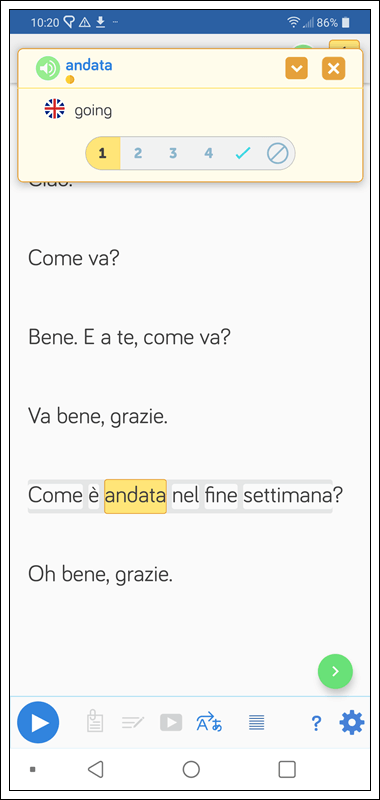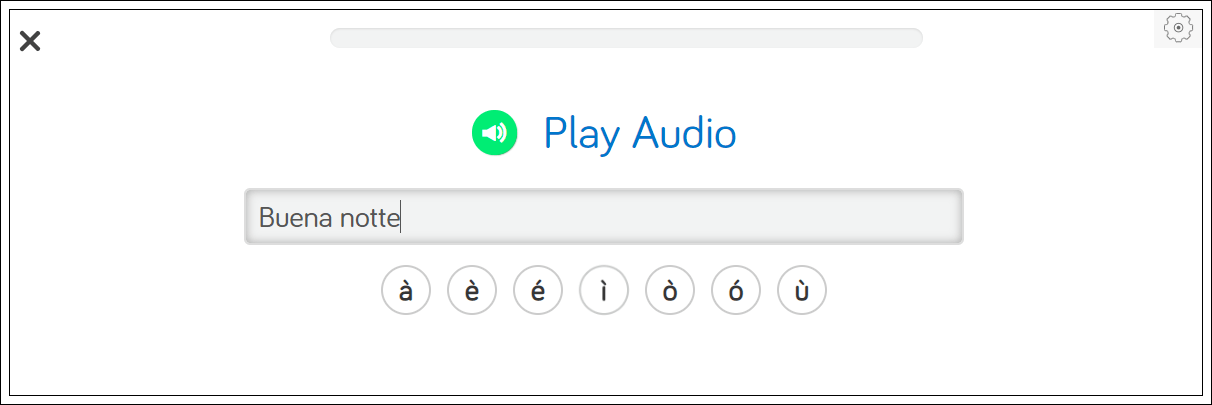Italian Greetings for the Most Common Situations
Italian greetings are used for welcoming and acknowledging others in a variety of situations. This post will give you an overview of greetings so that you can learn what to say and write, depending on the context.

Just Say Hello… in Italian
The most popular way of saying “Hello” in Italy is “Buongiorno” (“Good Day”, you’ll also encounter the spelling “Buon giorno”). You can’t go wrong with it as it will work well in both formal and informal contexts.
You can add “Madam” to it and say “Buongiorno, Signora” or “Sir” and make it “Buongiorno, Signore”. If you use a surname, let’s take Rossi as an example, you’d say “Buongiorno, Signora Rossi” to a woman and (attention!) “Buongiorno, Signor Rossi” to a man. As you can see “e” from “Signore” disappears if the word precedes a surname.

Another, less formal way of greeting people is “Ciao”. The word translates as “Hi!” but some Italians use it even with people they don’t know (others consider it rude). As you’re not a native speaker, it’s more difficult for you to feel when to use “Ciao” and when “Buongiorno” is more appropriate. I’d say that as a rule of thumb you should use the greeting that a person has chosen when addressing you. In other words, if they say “Buongiorno” reply in the same manner and if the say “Ciao” follow their lead too. When you have to greet someone first rather be too formal than too casual.

The good thing about “Ciao” is that you can use it all day long and it’s also a way of saying “Goodbye”. “Buongiorno”, on the other hand, becomes outdated later during the day and should be replaced with “Buonasera” (“Good evening”, you can also encounter the spelling “Buona sera”). The Italian “Good evening” has variations just like “Buongiorno” so if you’re talking to a man you could greet him with “Buonasera, Signore”, while when addressing a woman you should use “Buonasera, Signora”.
Last but not least, there’s a handy greeting “Salve”. Most Italians save it for the formal context but sometimes you can hear it used informally too. This word is an easy way out when you’re not sure how to address someone.
How Are You?
Saying hello is enough to greet someone but it’s even more polite if you add something more. As an English speaker you’ll know that I’m talking about asking someone how they’re doing. Yet again, just like in English, you’ll reply that you’re doing well in most cases, whether it’s true or not. The question has to do with politeness more than with someone actually being interested in your personal life.
Here are a few examples of how to ask people how they’re doing (and respond to such a question) in Italian:
Informal
– Ciao! Come stai? (Hi! How are you?)
– Bene, grazie. E tu? (Good, thank you. And you?)
– Ciao! Come va? (Hi! How are things?)
– Tutto bene. (All good.)
Formal
– Buongiorno. Come sta? (Good day. How are you?)
– Molto bene, grazie. E Lei? (Very well, thank you. And you?)
– Buona sera. Come sta, Signora Bianchi? (Good evening. How are you, Mrs. Bianchi?)
– Molto bene, grazie. E Lei? (Very well, thank you. And you?)
Correspondence and Phone Calls
You’ve learnt how to greet someone and ask them how they’re doing. What expressions to use, however, when you’re writing an email? As always it depends on the context.
When you’re friendly with someone you can start a letter by simply saying “Ciao”, just like you would in a face-to-face conversation. You should just add the name of the person you’re writing to e.g. “Ciao Francesca,”. As you can see the name is followed by a comma. This is why you’ll often see the first line of a letter/email starting with a lowercase letter as if it was a continuation of a sentence. Nevertheless, some people prefer to use a capital letter. You can compare both choices here:
Ciao Paula, (Hi Paula,)
spero che tu stia bene. (I trust you are doing well.)
and
Ciao Lorenzo,
Spero che tu stia bene.
You can also start an email to someone you’re familiar with by “Caro” (“Dear”) if it’s addressed to a man (e.g “Caro Marco,”) or “Cara” when the addressee is a woman. An even more affectionate term is “Carissimo” (“Dearest”) to a man and “Carissima” to a woman.
In a somewhat formal context Italians start their emails with “Buongiorno” if it’s sent early during the day and “Buonasera” if it’s written a bit later. These expressions, however, are not the most polite ones that you can use.
When you’re communicating with someone and you want to express your respect for them, there’s a number of opening Italian greetings that would work better:
- Gentile Signora / Gentile Signora Romano (Dear Madam / Dear Mrs. Romano)
- Gentile Signore / Gentile Signore Romano (Dear Sir / Dear Mr. Romano)
- Egregio Signore / Egregio Signor Ricci (Dear Sir / Dear Mr. Ricci)
A small note here: historically, “Gentile” was used only when writing to women but these days men are more and more often addressed in this way too.

Fortunately, answering the phone in Italian is much easier than choosing the correct form of addressing someone in an email or a letter. When picking up the phone say simply “Pronto”, regardless of who’s on the other side of the receiver.
Italian Greetings and LingQ
LingQ comes equipped with tons of Italian content so you can start studying. In fact, there are already lessons in LingQ that can teach you Italian greetings. These lessons come with audio so you can not only read but also listen to how the words are pronounced. Regarding pronunciation, we’ve written a post on the various type of accents you’ll find throughout Italy which you should check out.

Once the lesson is open, you’ll be able to read and save any new vocabulary you come across. LingQ will store your new vocabulary and turn them into flashcards so you can review them at a later date.

LingQ is available for desktop as well as Android and iOS. Gain access to thousands of hours of audio and transcripts and begin your journey to fluency today. That means when you’re on the bus or on a flight to a new destination, you can make use of your time by reading more and thus, learning vocabulary much faster.

One last tip
Languages change constantly so what is true today may not be true tomorrow. There are also many regional preferences that will make your language learning journey fascinating (and more difficult).
To keep yourself up to date try to visit Italy often and most importantly, find native Italian or Italian speaking friends with whom you can practice your language skills.
Especially written communication via email is subject to rapid changes.
Remember to keep an open mind and to use every opportunity to learn and to make the language you speak sound more natural.
Check out LingQ today to discover the best way to learn Italian from content you love!
Enjoyed this post? Check out polyglot and LingQ cofounder Steve Kaufmann’s YouTube video on how he learned Italian!
***
Magdalena Osiejewicz-Cooper has lived in Bologna and Palermo. Apart from Italian she speaks fluent Polish and French. She is currently self-studying Spanish.



